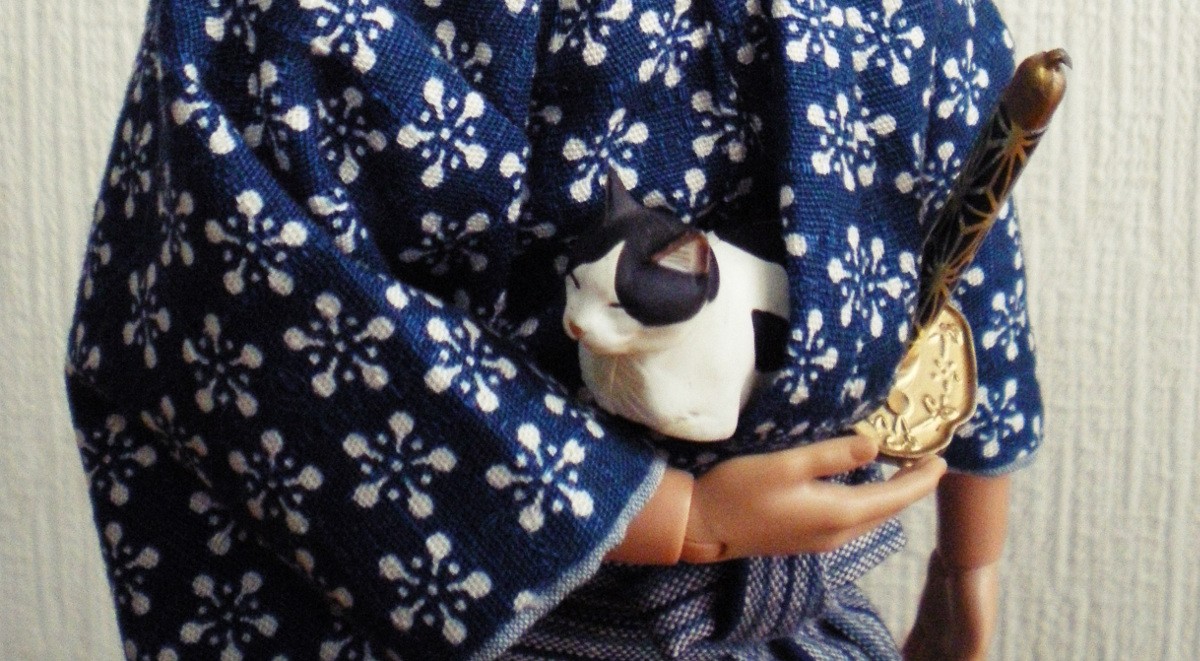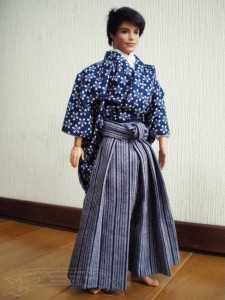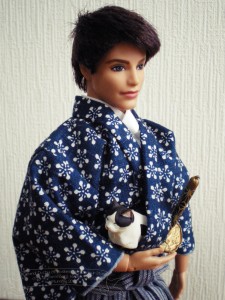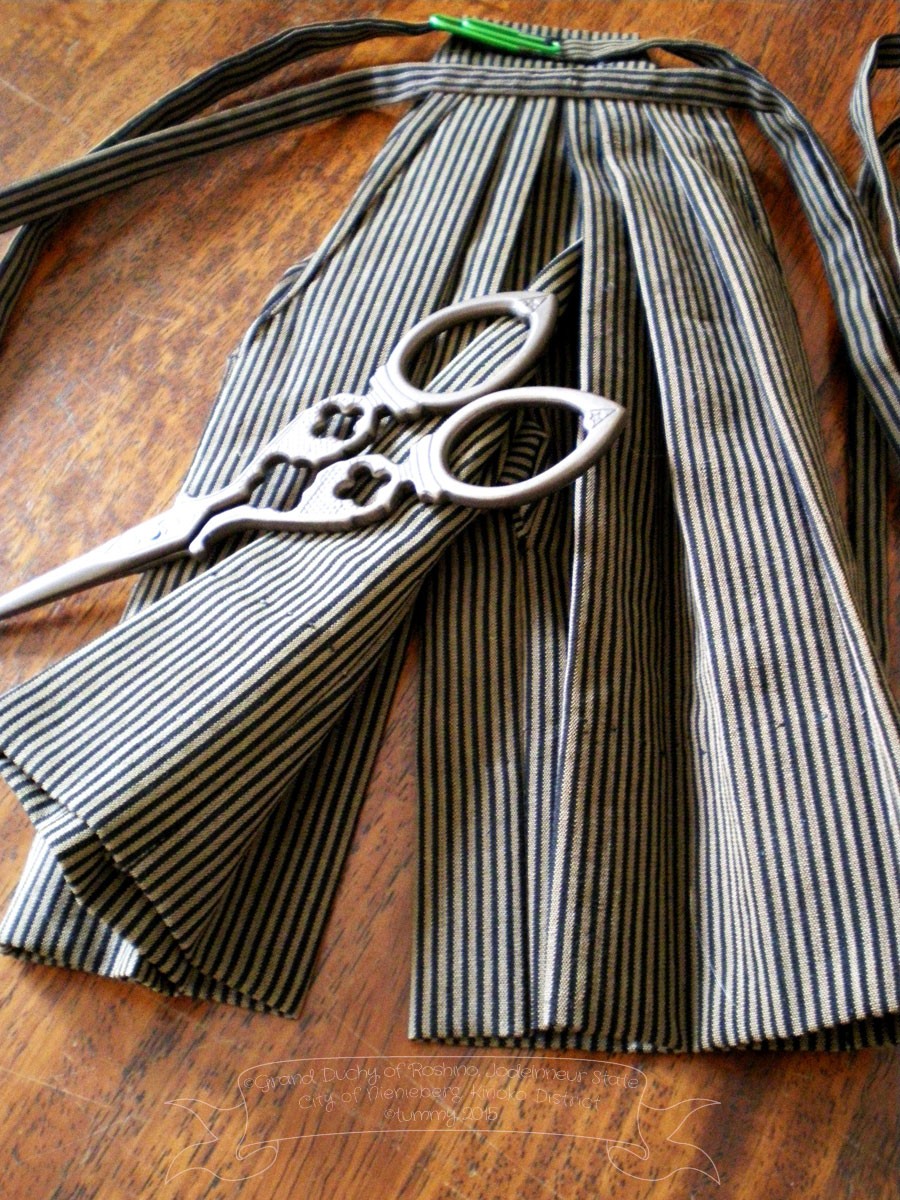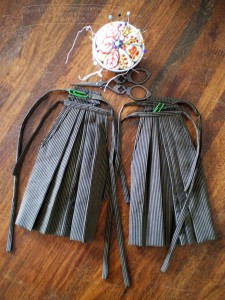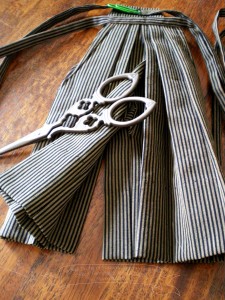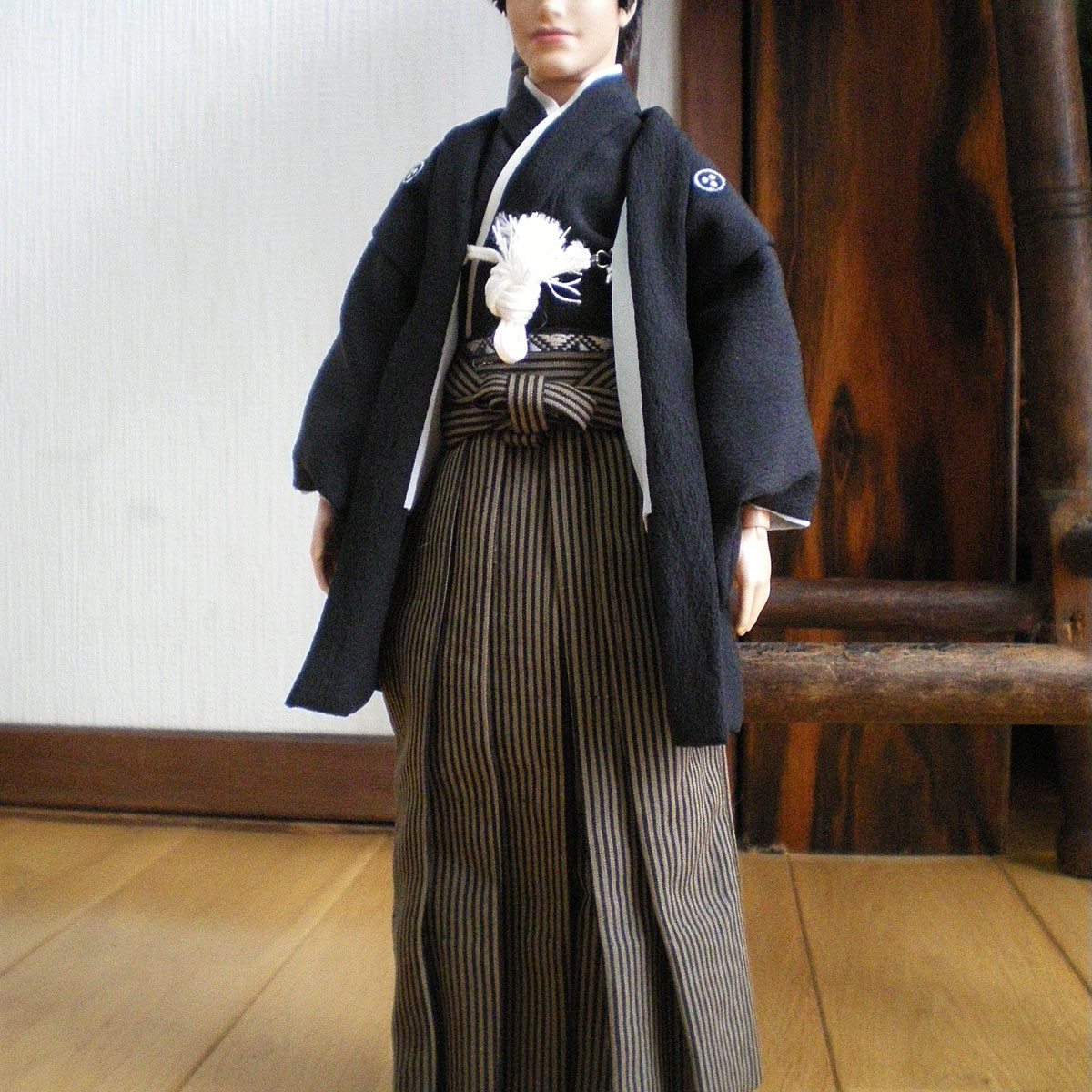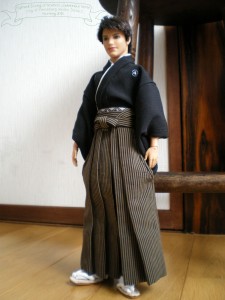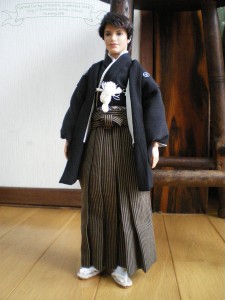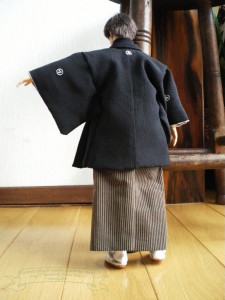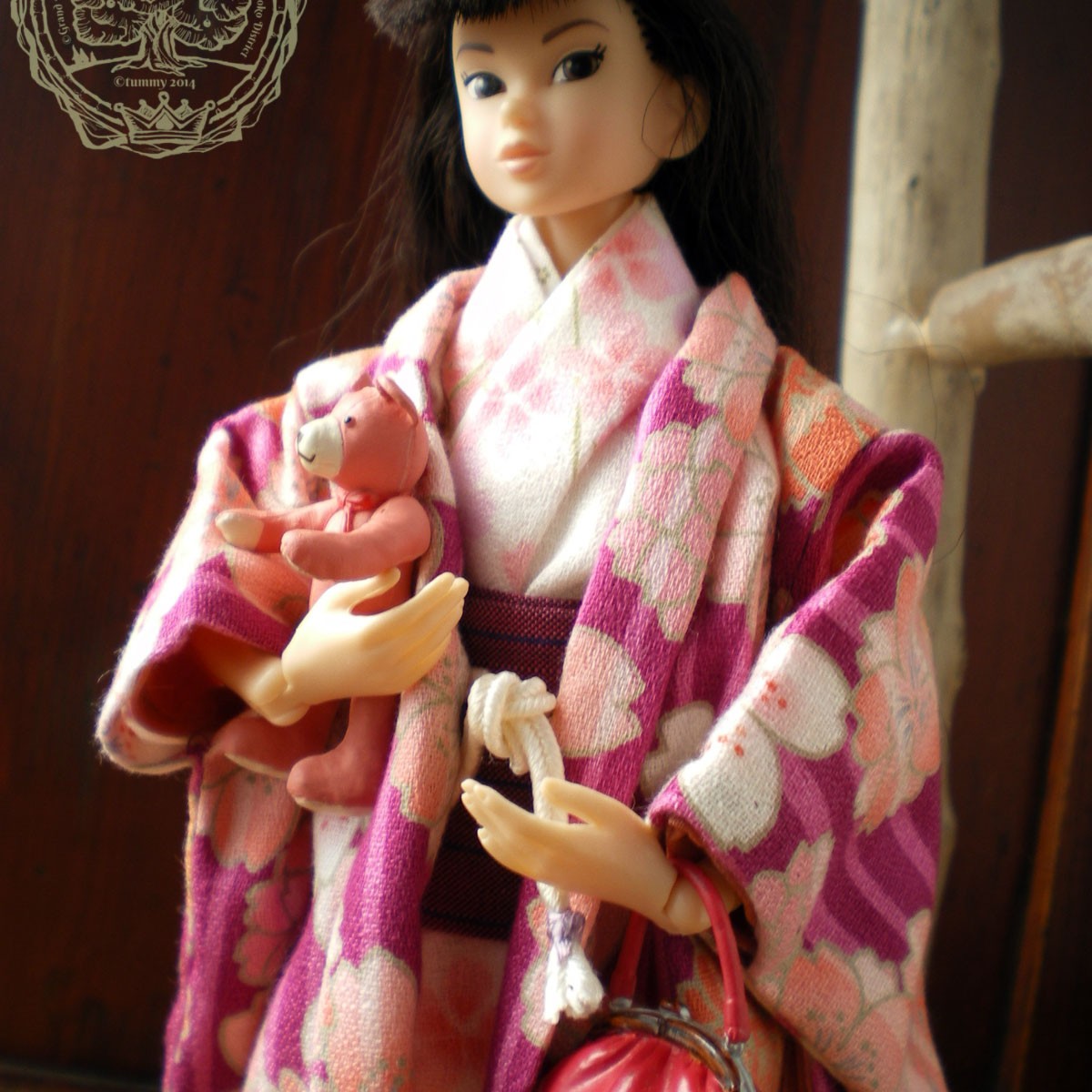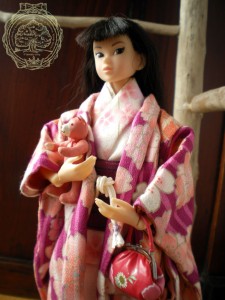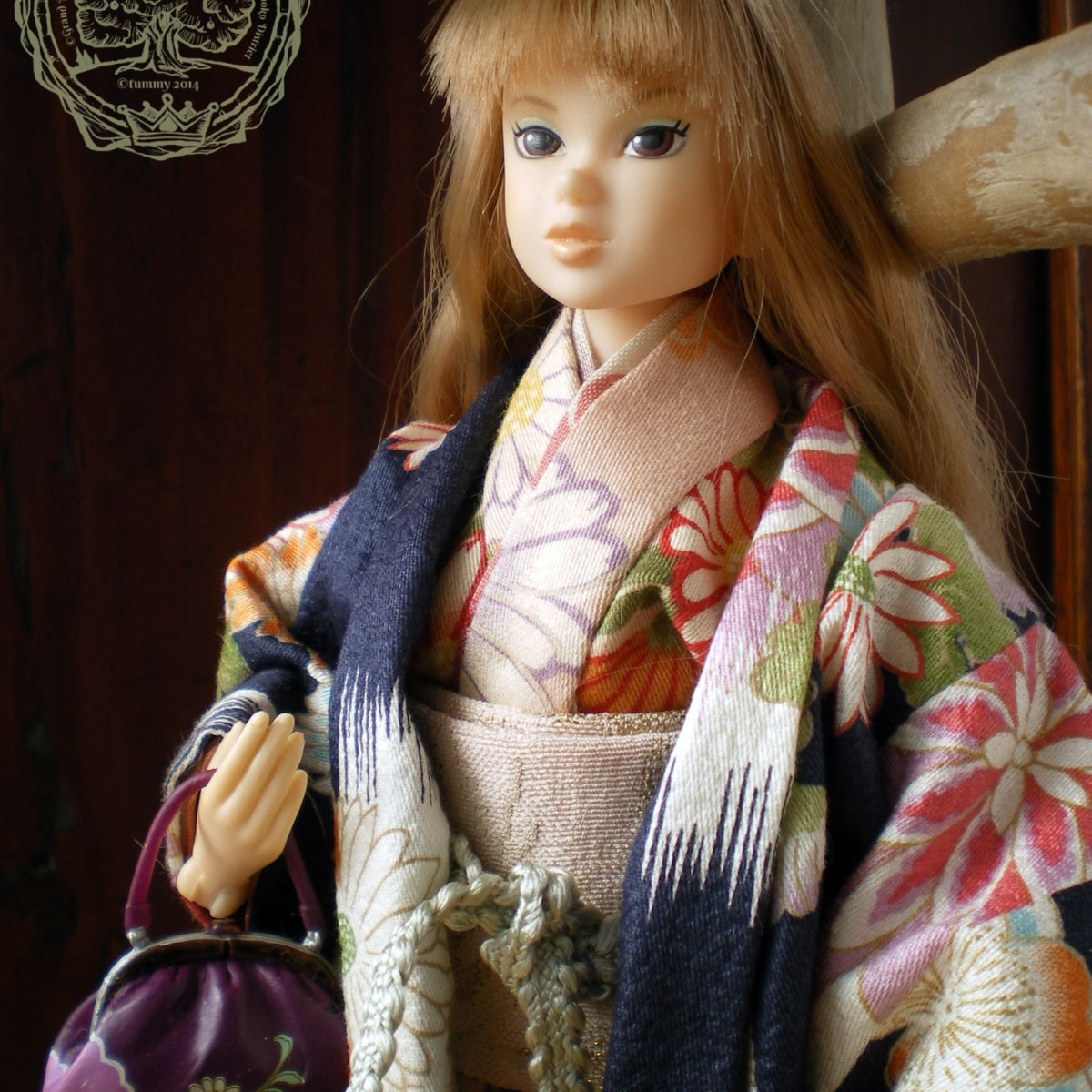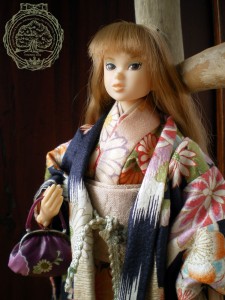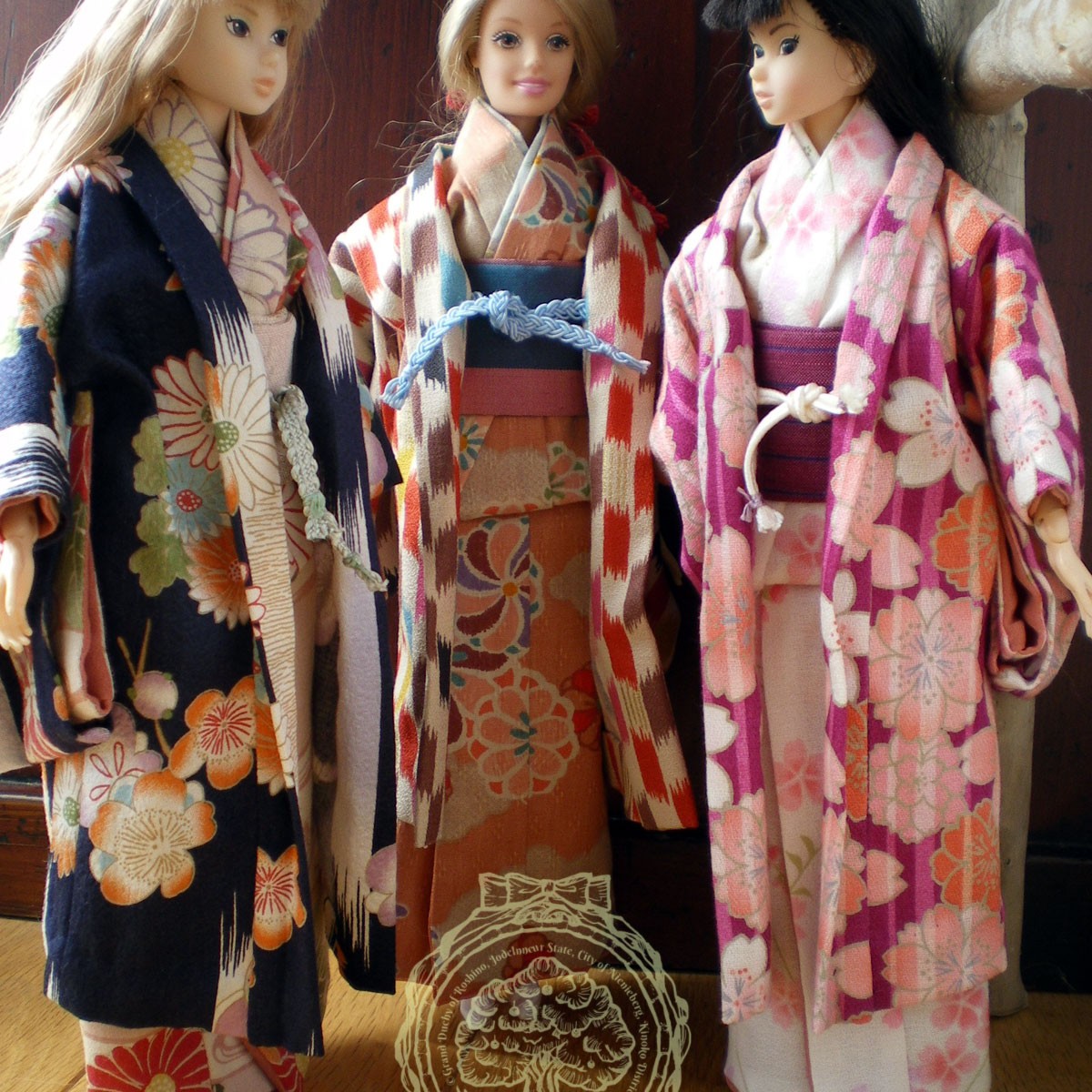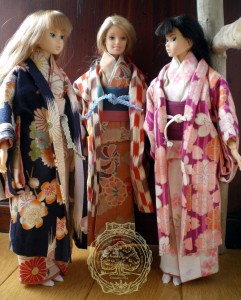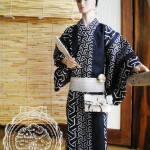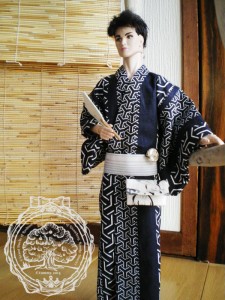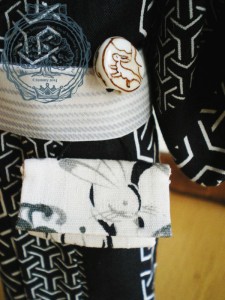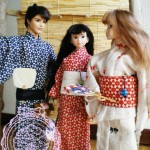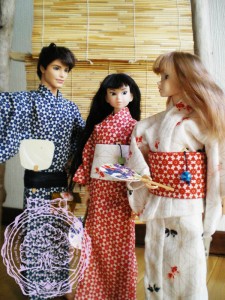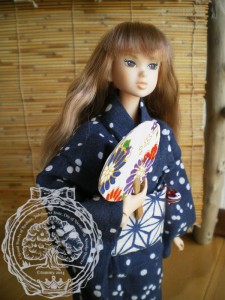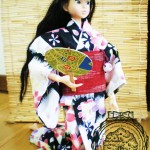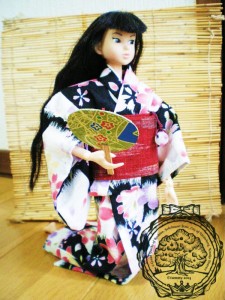Grand Duchy of Roshino, Jodelnneur State, City of Nienieberg, Kinoko District
ロシーノ大公国ヨーデルヌール州ニーニーベルグ市きのこ地区
Hakama for 1/6 size dolls 1/6サイズドール用の馬乗り袴
お人形用の袴です。
Hakama for dolls.
足を入れる部分が二つに分かれている馬乗り袴があります。
There is two types of men’s hakama: one is called “Andon hakama”
which is a skirt-type (undivided), and the other
called “Umanori hakama” which is for horse-riding (divided legs).
襞の畳み方が左右対称ではないところが特徴です。
Umanori hakama is more masculine, so to speak.
It has a distinctive arrangement of pleats, that is asymmetrical.
Doll’s Kimono Montsuki Hakama 1/6サイズドール 紋付袴
着物と羽織の両胸と背中、両袖の後ろに紋が入ります。
これを「五つ紋」といいます。
長着に袴をつけます。
I made a kimono and hakama ensemble with family crests for 1/6 size doll.
It’s Japanese man’s formal attire.
Its kimono and haori have family crests on both sides of chest, back, and back of the sleeves.
They are called “Itsutsumon”, meaning five family crests.
First, put nagagi (ankle-length kimono) and hakama.
Then wear a haori over.
You can see where those family crests are on the back.
Doll’s Kimono & Haori 1 ドールの着物と長羽織その1
長めの羽織は、日本の大正時代から昭和初期くらいに流行したものです。
模様は大柄で、華やかな色遣いのものが多いです。
I made 1/6 size doll’s kimono and naga-baori (long- haori: knee-length kimono coat).
These long length haori (kimono coat) was popular between Taisho and early Showa era in Japan.
They tend to be large and bold color patterns.
Doll’s Kimono Yukata for Boys FR Homme FRさんの浴衣
ケンより背が高く、手足が長いのです。
I made yukata for FR Homme doll from Integrity Toys.
He is taller than Ken and has longer arms and legs than that of Ken.
帯にとめる根付も兎の描かれたものです。
His cigarette case is bunny print.
Netsuke, which is a charm attached to the cord of cigarette case, is
also a bunny motif.
Doll’s Kimono Yukata for Girls & Boys momokoさんとケンの浴衣
ケンの紺の浴衣と中央のmomokoさんの浴衣は、同じ柄の色違いです。
右端のmomokoさんと中央のmomokoさんの浴衣は
帯と着物の生地を逆にしてみました。
Here you see a boy and a girl in matching yukata in different colors.
Navy blue yukata Ken is wearing and red yukata momoko is wearing
are the same print but in different colors.
Notice the obi momoko in the right is wearing is the same fabric
as yukata that momoko in the middle is wearing
and the obi in the middle is the same fabric
as yukata in the right.
